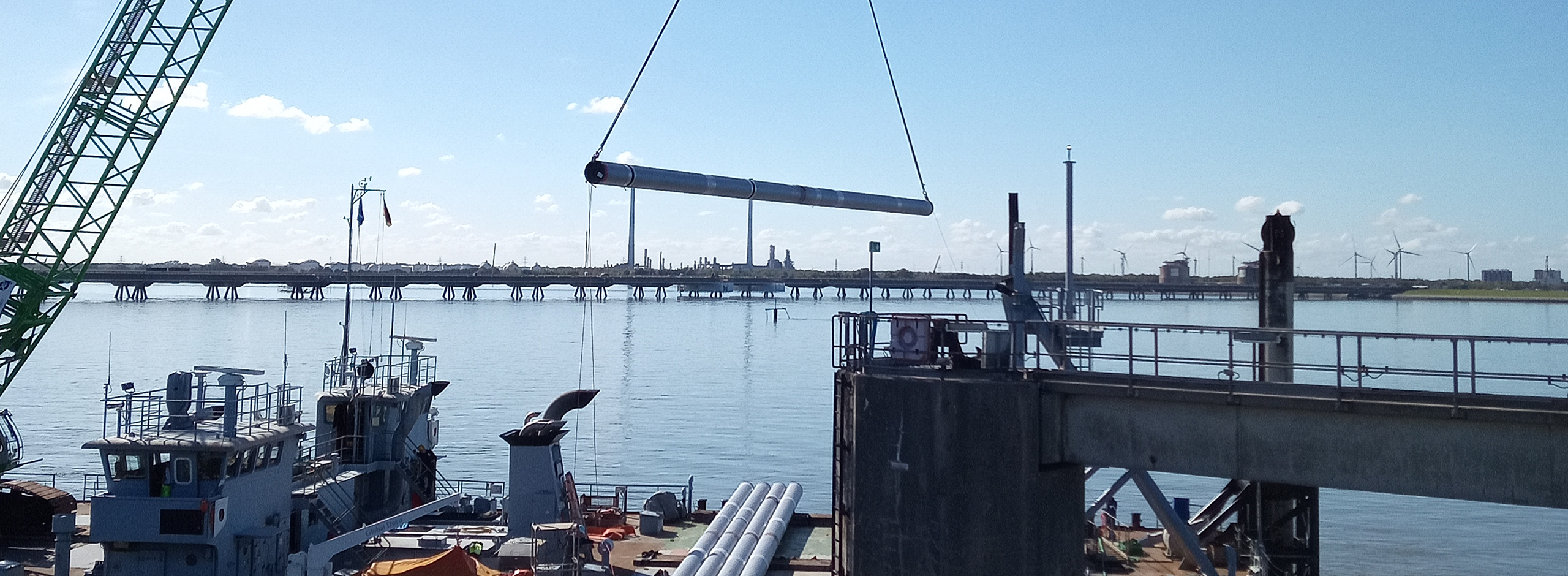The Jetty
The LNG terminal is an expansion of the existing jetty and consists of four berthing dolphins, six mooring dolphins, a high-pressure loading platform with loading arms, including infrastructure with emergency power generators. Safety is ensured by an independent and redundant fire extinguishing system with three monitors on the jetty.
The connecting line suspended from the loading arms on the jetty feeds the natural gas into the pipeline to the transfer point of Open Grid Europe GmbH (OGE). Through a connecting line, the natural gas is transported into the German long-distance gas transmission network.

The FSRU "Höegh Esperanza" is a floating terminal permanently stationed at the jetty of the Voslapper Groden transshipment facility, where it receives LNG deliveries from the tankers. The FSRU consists of LNG storage tanks and LNG regasification facilities. For this purpose, the liquefied natural gas is transferred from the LNG tankers to storage tanks and transformed back into the gaseous state. Seawater is used for heating the -162°C cold natural gas.
Operating Modes of the FSRU
The FSRU "Höegh Esperanza" can be operated in three cycles. In the "open loop" mode, only seawater is used as a heat source when the seawater temperature is higher than 13°C. In the "combined loop" mode, both seawater and steam are utilized when the seawater temperature ranges between 6°C and 13°C. In the "closed loop" mode, only steam is used to provide heat when the seawater temperature is below 6°C, and no seawater is taken in or discharged. In the first two operating modes, seawater is used as a regenerative heat source and is returned to the Jade with a temperature reduced by 7°C. Seawater is required for the operation of the FSRU in each mode, but in varying quantities. The intake or discharge rates range from approximately 6,500 m³/h (closed loop) to around 19,500 m³/h (open loop).
Image: © Höegh LNG
Pipeline, connecting LNG terminal and gas distribution facility
An approximately three-kilometer-long high-pressure pipeline connects the LNG terminal to the transfer station of Open Grid Europe GmbH (OGE). This injection point makes Wilhelmshaven the ideal location for an LNG terminal.
